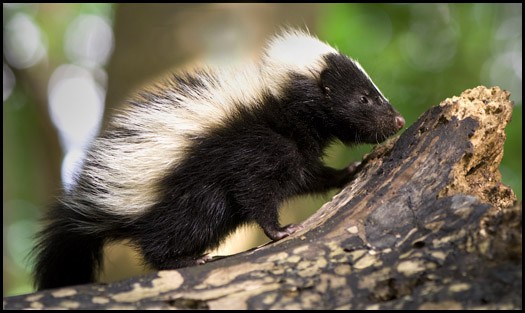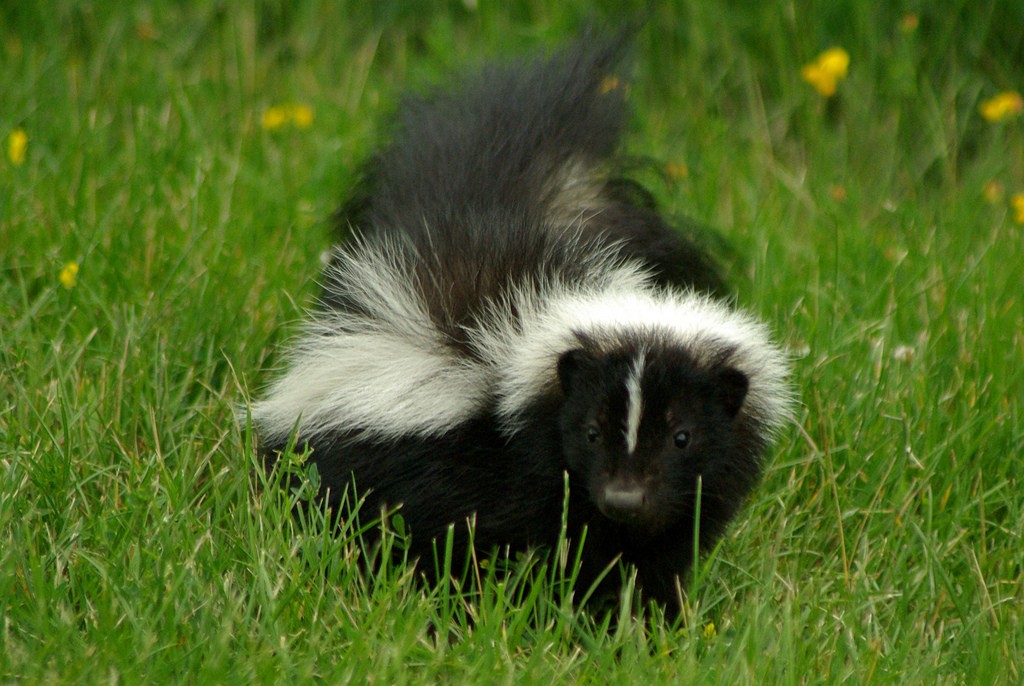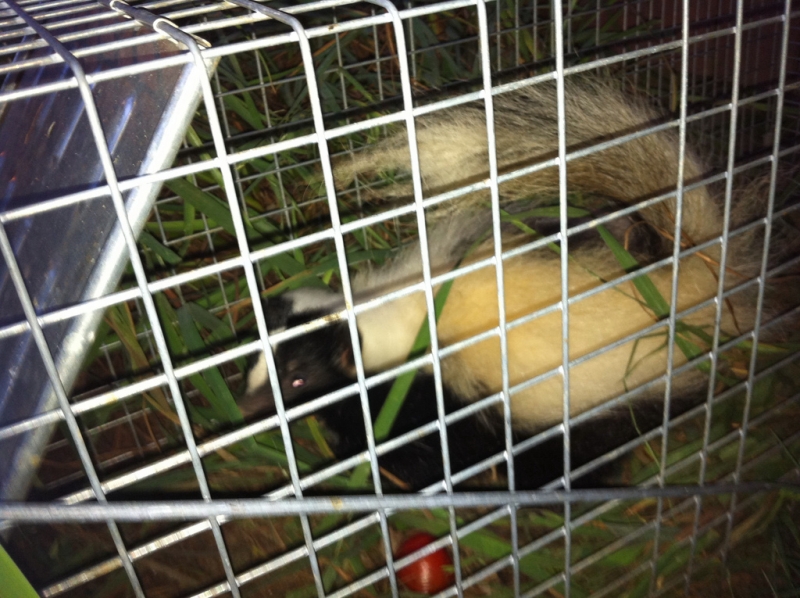Skunk Removal
What is a skunk?
Skunks have powerful smelling spray that is hard to remove. Glands under its large tail produce this oily spray. Skunks turn around and discharge this foul spray to its rival. It can pass through as far as three meters.
Its mist don’t cause harm to its victims, yet, it makes them feel uncomfortable. The smell is a good defense because it’s very hard to remove and can remain for a couple of days. Predators who hunt skunk really give an extensive tie up in order to defeat it.
Skunks are all black-and-white. However, they differ in size and patterns.
They live in vacant logs or dumped buildings and nest in dens built by other animals. They live in this nest for weeks during winter time. Female skunks give birth between two and ten young each year.
Skunks have a mixed diet. They eat fruit and plants, insects, worms, and even small mammals. They prefer to hunt their food during night-time. Most of the skunks live in America, except for the Asian stink badgers that have recently been added to the skunk family.
Skunk Physical Description
Skunks can grow up to 15.6 to 37 in (40 to 94 cm) and weight from about 1.1 lb (0.50kg) (spotted skunk) to 18lb (8.2 kg) (hog-nosed skunks). Their bodies are quite elongated and moderately short. They are also using their muscled legs and long front claws for digging.
Several skunks are having the color of brown or grey and a few are cream-colored. Skunks are all born striped. Some stripes are in their legs but commonly, it is across their back and tail.
Skunk Behavior
Skunks are introvert animals, however, during winter time, they share hideout for warmth. They shelter in dens during the day and dig by their powerful claws. Both males and females dwell in overlapping homes throughout the year, typically 2 to 4 km2 (0.77 to 1.54 sq mi) for females and up to 20 km2 (7.7 sq mi) for males.

Photo credit: julierohloff / Foter.com / CC BY-SA
Skunks do not hibernate during winter but do nest up for extended situation. Though, they remain not active and feed infrequently, going through an inactive period. Female skunks group together over winter while male skunks often burrow by themselves.
Skunks are incapable of seeing objects more than 10 ft because they have poor vision but have tremendous senses of smell and hearing. Skunk’s lifespan in the wild can reach up to 7 years but may live up to 10 years in captivity.
Do get a disease from the bite of a skunk?
Rabies virus is the most widespread effect of skunk’s bite to humans. There are 1,494 rabies cases of skunks in the United States for the year 2006 recorded by the Centers for Disease Control (CDC). Skunks follow raccoons as with rabies cases, although this varies locally. Don’t allow a skunk to linger in your home, call a skunk removal specialist.
What is Aleutian Disease?
Aleutian Disease is a very contagious disease that has no known cure or treatment at this time. An increase in the globulins, chronic wasting, and signs in central nervous system, kidney and liver changes are some symptoms caused by this virus. The virus impinges on the skunk’s immune system and is a strain of the parvovirus.
Can You Treat Aleutian Disease?
There is no known cure for a skunk with ADV. But there are some recommended medications to help your skunk, such as supportive care which includes subcutaneous fluid administration, syringe feeding, and antibiotics.
What damages can a skunk bring to a property?
While hunting for food like insects and worms, skunks bring damage to gardens and lawns. They turn out to be a problem when their feeding and burrowing activities affect human’s welfare. Skunks damage poultry operations which expose farm animals to diseases and sometimes cause damages to crops. They also bring health risks to humans and pets because of some transmittable diseases and parasites they carry. They are considered pest because of their odor and they all have the means to release a sickening, greasy musk from their anal glands. They perfectly discharge their musk to about 3 meters when they are being dealt with.
Skunk Odor Control
In order to neutralize the skunk’s odor under buildings, on clothing and pets, apply a veterinary use deodorizer moderately. Vinegar, tomato juice, or a weak solution of household ammonia can also help remove the odor from clothing.
Skunk Removal – Skunk Control Methods
Skunks population is needed to be controlled because they pose conflict, damage, and health risk to humans. There are effective programs that help control skunk problems which include both environmental and mechanical measures.
Capturing or removing skunks is a dangerous task for untrained individuals. Make sure to contact your local wildlife removal company to help you rid your lawn or basement with skunks. Wildlife removal experts are licensed and certified to implement proven and humane methods of removing skunks so you don’t need to worry about anything else. Got skunk problems? Call us now at the number below!
Skunk Removal – Skunk Trapping
Anytime Wildlife Control
219-464-7966


